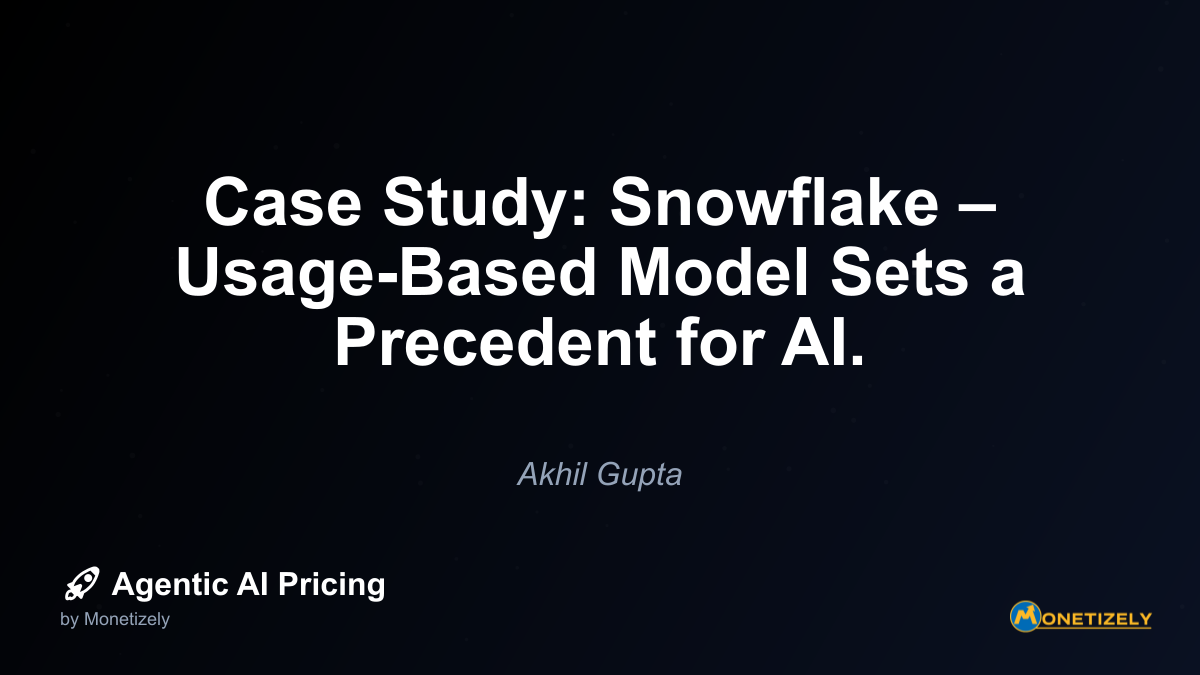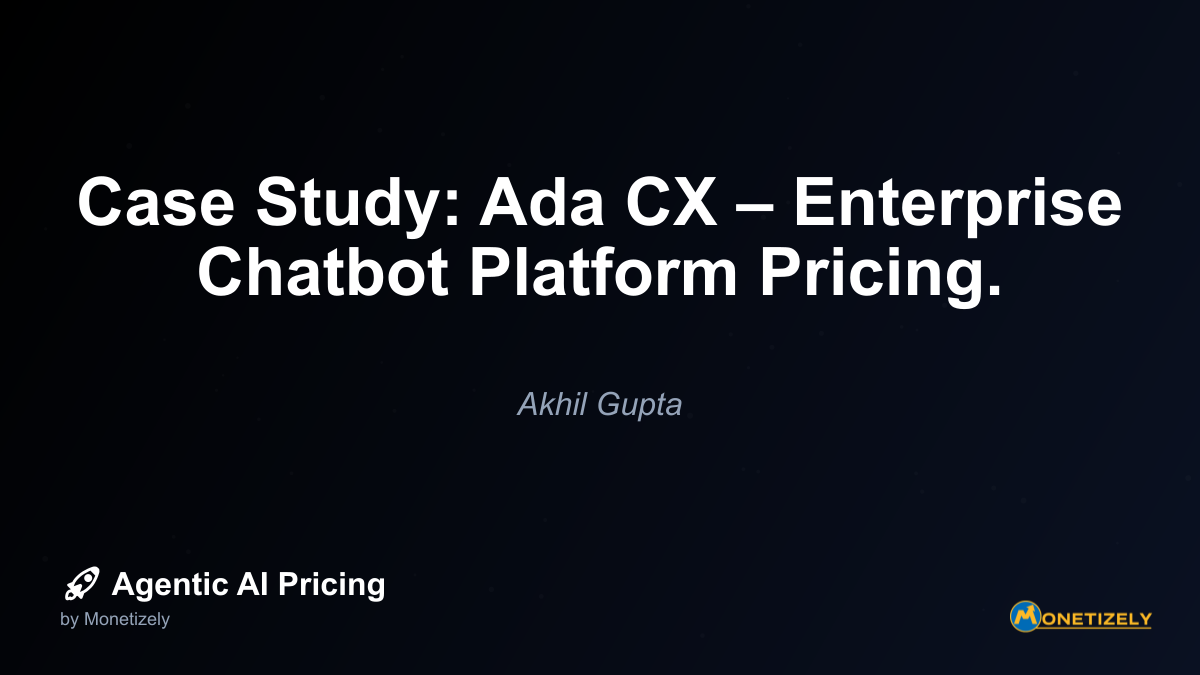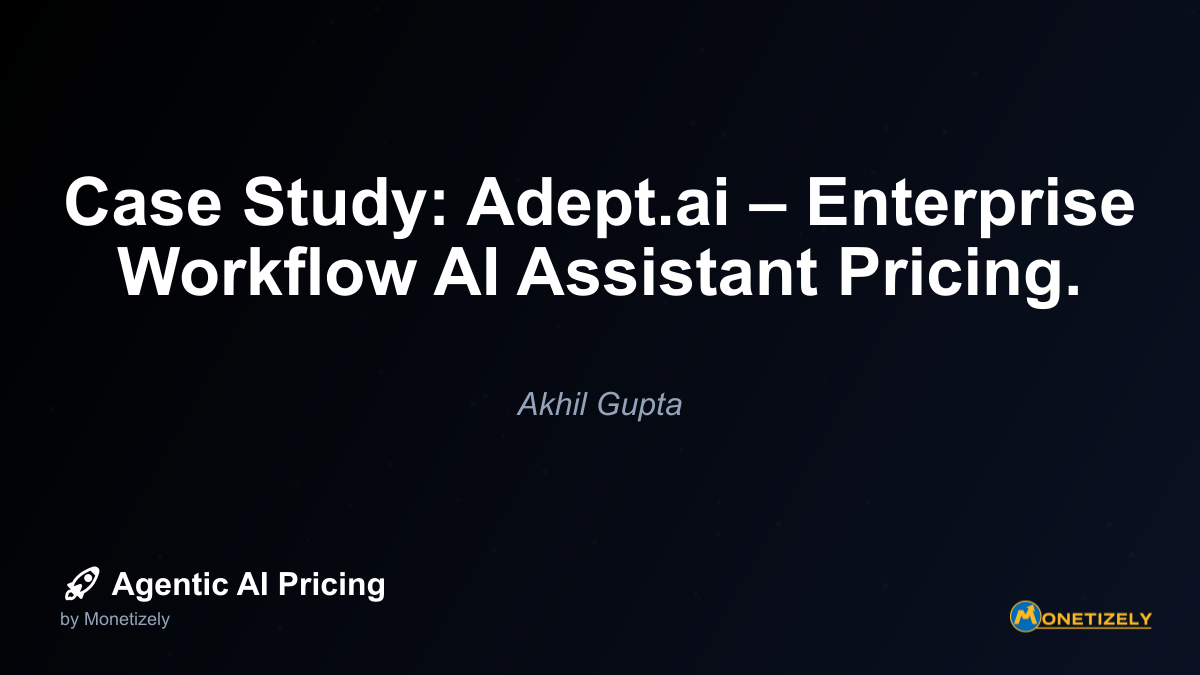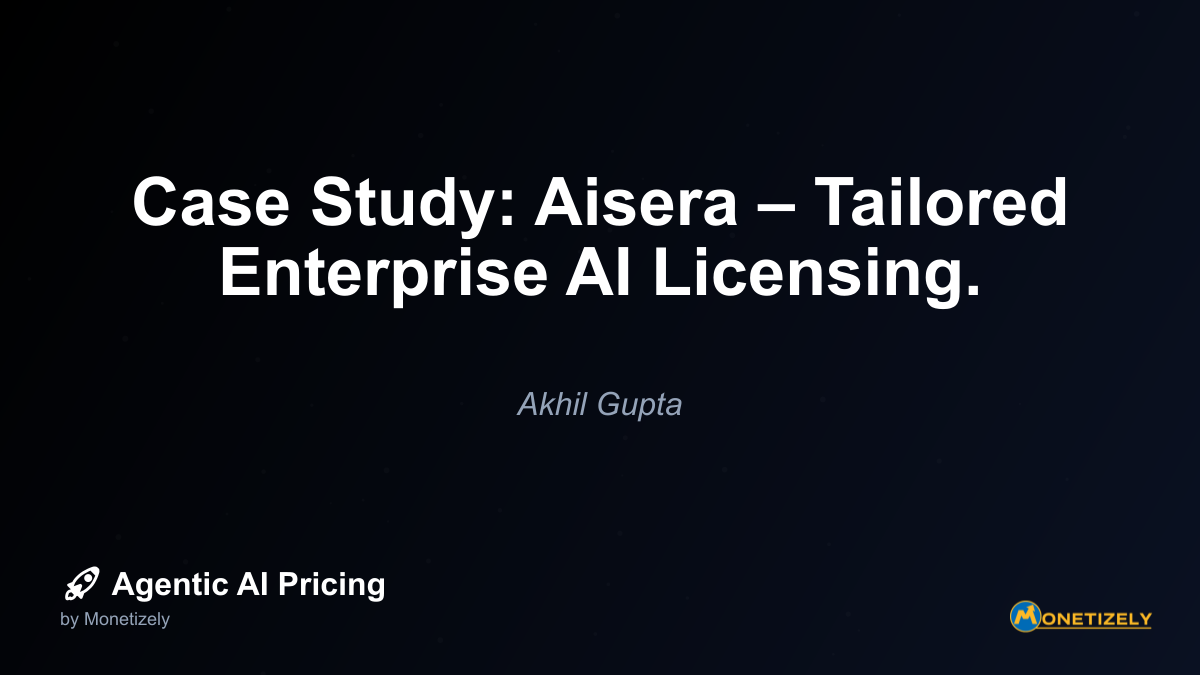· Akhil Gupta · Case Studies · 8 min read
Case Study: Snowflake – Usage-Based Model Sets a Precedent for AI.
AI and SaaS Pricing Masterclass
Learn the art of strategic pricing directly from industry experts. Our comprehensive course provides frameworks and methodologies for optimizing your pricing strategy in the evolving AI landscape. Earn a professional certification that can be imported directly to your LinkedIn profile.

1. Market Education
Before Snowflake, most enterprise customers were accustomed to fixed-fee licensing or subscription models. Snowflake invested heavily in educating customers about the benefits of consumption-based pricing, emphasizing the flexibility, transparency, and value alignment it provided.
This education extended beyond direct customers to the broader market, including analysts, investors, and industry influencers. By the time Snowflake went public, the market understood and valued its pricing approach – paving the way for AI companies to adopt similar models without facing the same educational hurdles.
2. Financial Reporting Frameworks
Snowflake also helped establish financial reporting frameworks for consumption-based models. The company introduced metrics like net revenue retention, remaining performance obligations (RPO), and consumption efficiency that helped investors evaluate its business. These same metrics now provide a blueprint for AI companies to communicate their financial performance.
As one financial analyst noted: “Snowflake created the playbook for how consumption-based businesses should be valued. They showed that predictable consumption can be just as valuable as – if not more valuable than – contractual recurring revenue.”
3. Technical Infrastructure
Perhaps most importantly, Snowflake and similar companies built the technical infrastructure that enables usage-based pricing. This infrastructure includes:
- Real-time usage monitoring and reporting
- Flexible billing systems capable of handling consumption-based pricing
- Forecasting tools to predict future usage
- Budget management features to prevent unexpected costs
This infrastructure is now being adapted and extended for AI pricing models, allowing new companies to implement consumption-based pricing without building everything from scratch.
Applying Snowflake’s Lessons to AI Pricing Models
AI companies face unique challenges in pricing their offerings. The computational intensity of AI workloads, the variable value delivered by different AI applications, and the rapid evolution of AI capabilities all complicate pricing decisions. However, Snowflake’s model offers several lessons that can be applied to AI pricing.
Usage-based pricing has become the dominant model for AI agents, with companies adapting Snowflake’s approach to their specific contexts.
1. Value-Based Consumption Metrics
Snowflake’s credit system provides a template for how AI companies can create consumption metrics that align with value. Rather than charging directly for raw computational resources (which customers may not understand), AI companies can define units of consumption that correlate with business value.
For example:
- An AI document processing service might charge per document processed
- A generative AI platform might charge per output generated
- A conversational AI might charge per interaction or conversation
- A predictive AI might charge per prediction or forecast
These value-based metrics make pricing more intuitive for customers while still maintaining the consumption-based approach.
2. Tiered Pricing Based on Complexity
Snowflake implemented different pricing tiers based on the complexity of workloads. Similarly, AI companies can structure pricing tiers based on the complexity of AI tasks:
- Basic tier: Simple AI operations with standard models
- Advanced tier: Complex operations requiring more computational resources
- Premium tier: Custom models or specialized AI capabilities
This tiered approach allows companies to capture more value from advanced use cases while keeping entry-level pricing accessible.
3. Hybrid Models with Commitments
Snowflake evolved its model to include capacity commitments that provided customers with discounted rates in exchange for usage commitments. This hybrid approach – combining the flexibility of consumption-based pricing with the predictability of commitments – is particularly well-suited to AI.
AI companies can implement similar hybrid models:
- Pay-as-you-go pricing for variable or unpredictable usage
- Committed use discounts for predictable baseline usage
- Subscription access to core features with consumption-based pricing for advanced capabilities
This approach gives customers flexibility while providing AI companies with more predictable revenue streams.
Challenges in Adapting Snowflake’s Model to AI
While Snowflake’s usage-based model provides a valuable blueprint for AI companies, several challenges must be addressed when adapting it to AI contexts:
1. Cost Predictability for Generative AI
Generative AI can be particularly challenging to price using a consumption model because the resources required can vary dramatically based on the complexity of the request. A simple text generation might consume minimal resources, while a complex creative task could require significant computational power.
To address this challenge, AI companies need to:
- Provide clear, upfront estimates of consumption before tasks run
- Implement budgeting tools that prevent unexpected costs
- Offer more granular control over resource allocation
2. Variable Cost Structures
Snowflake’s costs scale relatively linearly with usage. In contrast, AI services often have more complex cost structures, with some fixed costs (like model development) and variable costs (like inference).
This requires more sophisticated pricing models that account for:
- Amortization of model development costs
- Ongoing model training and improvement
- Variable inference costs based on model complexity
- Storage costs for model weights and user data
3. Rapid Technological Evolution
AI capabilities are evolving rapidly, making it challenging to establish stable pricing models. What seems expensive today may become commodity pricing tomorrow as technology advances.
To address this challenge, AI companies should:
- Design pricing models with built-in flexibility to adapt to technological changes
- Clearly communicate the value proposition beyond raw computational resources
- Focus on business outcomes rather than technical specifications
Real-World AI Pricing Examples Inspired by Snowflake
Several AI companies have successfully implemented usage-based pricing models that build on Snowflake’s approach:
OpenAI (ChatGPT and API Services)
OpenAI offers a tiered approach to its API services:
- Free tier with limited usage
- Pay-as-you-go pricing based on tokens processed (input and output)
- Subscription options (ChatGPT Plus) that provide priority access and higher usage limits
This model combines elements of Snowflake’s approach (consumption-based pricing) with subscription components that provide more predictable revenue.
Anthropic (Claude AI Assistant)
Anthropic prices Claude based on:
- Input tokens (what users send to the model)
- Output tokens (what the model generates)
- Model complexity (with more advanced models commanding premium pricing)
This granular approach allows customers to optimize their usage based on their specific needs while ensuring Anthropic captures appropriate value from more resource-intensive requests.
Hugging Face (Machine Learning Models)
Hugging Face offers:
- Free access to open-source models
- Usage-based pricing for inference API calls
- Tiered pricing based on model size and complexity
- Enterprise options with committed usage discounts
This approach democratizes access to AI while monetizing production usage – similar to how Snowflake made data warehousing more accessible while capturing value from enterprise customers.
The Future of AI Pricing: Beyond Snowflake
While Snowflake’s model provides a valuable starting point for AI pricing, the industry is likely to evolve beyond simple consumption-based approaches as AI technology matures. Several trends are emerging:
1. Outcome-Based Pricing
Some AI companies are experimenting with pricing based on business outcomes rather than resource consumption. For example:
- A sales AI might charge a percentage of incremental revenue generated
- A customer service AI might charge based on resolution rates or customer satisfaction
- A productivity AI might charge based on time saved
This approach further aligns vendor and customer interests but requires sophisticated tracking and attribution mechanisms.
2. Differentiated Pricing by Model Quality
As AI models proliferate, pricing is increasingly differentiated based on model quality and capabilities. Companies charge premium prices for:
- Higher accuracy models
- Models trained on more extensive or higher-quality data
- Models with specialized domain expertise
- Models with faster response times
This quality-based differentiation allows companies to capture more value from superior AI offerings.
3. API Marketplaces and Ecosystems
Following the cloud marketplace model, AI ecosystems are emerging where multiple AI services can be consumed through unified platforms with integrated billing. These marketplaces simplify the procurement and management of AI services while providing more predictable pricing through consolidated billing.
Implementation Considerations for AI Companies
For AI companies looking to implement Snowflake-inspired pricing models, several practical considerations should guide their approach:
1. Instrumentation and Metering
Robust usage tracking is fundamental to consumption-based pricing. AI companies need to invest in:
- Accurate, real-time metering of all billable activities
- Transparent reporting accessible to customers
- Auditable usage records for billing disputes
- Forecasting tools to help customers predict costs
2. Customer Education
Like Snowflake, AI companies need to educate customers about the benefits of consumption-based pricing. This education should focus on:
- The flexibility to scale usage up or down as needed
- The alignment between costs and value received
- The ability to start small and grow over time
- The transparency of usage-based billing
Mastering usage-based AI pricing requires both technical implementation and customer education to ensure successful adoption.
3. Financial Planning and Investor Communication
AI companies need to develop financial models and metrics that help investors understand the value of consumption-based revenue. Key metrics include:
- Net revenue retention (how spending grows within existing customers)
- Customer acquisition costs relative to lifetime value
- Consumption efficiency (how effectively customers use the service)
- Forward-looking consumption indicators
Conclusion: Snowflake’s Enduring Impact on AI Pricing
Snowflake’s pioneering usage-based pricing model has fundamentally changed how technology companies approach monetization. By aligning costs with value, providing transparency and flexibility, and enabling frictionless expansion, Snowflake created a blueprint that many AI companies now follow.
The impact extends beyond specific pricing mechanics to how customers and investors think about technology consumption. Customers now expect the flexibility to pay for what they use, while investors understand and value consumption-based revenue streams. This market education may be Snowflake’s most significant contribution to the AI industry.
As AI continues to evolve, pricing models will adapt and innovate beyond Snowflake’s original approach. However, the core principles – aligning cost with value, providing transparency, and enabling easy expansion – will remain fundamental to successful AI pricing strategies.
For AI companies developing their pricing strategies, Snowflake offers both inspiration and practical lessons. By understanding how Snowflake succeeded with usage-based pricing and adapting those lessons to the unique characteristics of AI, companies can develop pricing models that drive adoption, growth, and sustainable profitability.
The precedent has been set. The question for AI companies is not whether to embrace consumption-based pricing, but how to adapt and evolve it for their specific context and customers.
Co-Founder & COO
Akhil is an Engineering leader with over 16+ years of experience in building, managing and scaling web-scale, high throughput enterprise applications and teams. He has worked with and led technology teams at FabAlley, BuildSupply and Healthians. He is a graduate from Delhi College of Engineering and UC Berkeley certified CTO.
Pricing Strategy Audit
Let our experts analyze your current pricing strategy and identify opportunities for improvement. Our data-driven assessment will help you unlock untapped revenue potential and optimize your AI pricing approach.




